Birdfinding.info ⇒ One of the commonest birds on almost all of the islands that comprise its limited range. In the Canary Islands, it is uncommon and local on Fuerteventura and Lanzarote, but otherwise unlikely to be missed on any visit to Macaronesia.
Atlantic Canary
Serinus canaria
Endemic to Macaronesia: the Azores, Madeira, and the Canary Islands, where it occurs in most habitat types at all elevations. Apparently resident on every significant island in all three archipelagos.
An introduced population is well-established on Midway Atoll in Hawaii’s Northwestern Chain the mid-Pacific, where it was introduced around 1910. The introduction of rats to Midway in the 1940s nearly eliminated it, but a few survived. With the eventual extermination of rats in the late 1990s, the canary population rebounded into the thousands. The Midway population is derived from cagebirds that were selectively bred to be pale yellow, but a few streaked individuals of more natural phenotypes sometimes emerge from the domesticated gene pool.
Identification
A heavily streaked, sparrow-like finch that is largely grayish with variable amounts of yellow.
Males typically have extensive yellow or orange staining on the face, breast, and rump, and smaller, duller patches on the wings and back.
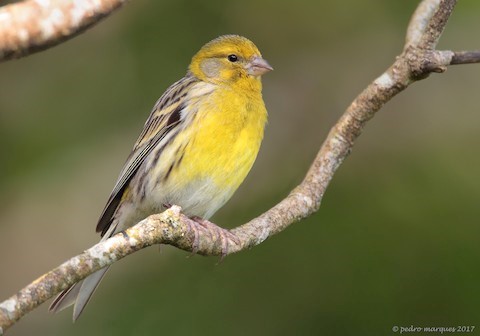
Atlantic Canary, male. (Recreio do Viveiro do Nordeste Forest Reserve, São Miguel, Azores, Portugal; July 11, 2017.) © Pedro Marques

Atlantic Canary, male. (Las Lajas, Tenerife, Spain; July 10, 2008.) © Miguel Rouco
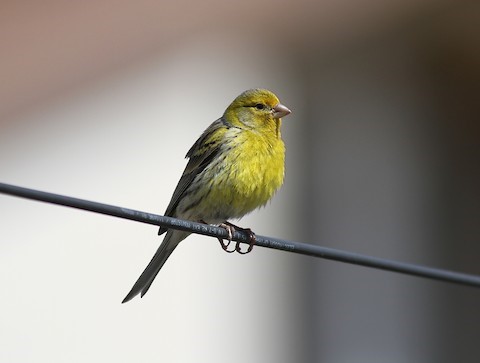
Atlantic Canary, male. (Los Alvarados, Gran Canaria, Spain; April 16, 2020.) © Xabier Ramirez

Atlantic Canary, male, showing mostly unstreaked underparts. (El Juncal, Pajonales, Gran Canaria, Spain; November 9, 2019.) © William Stephens
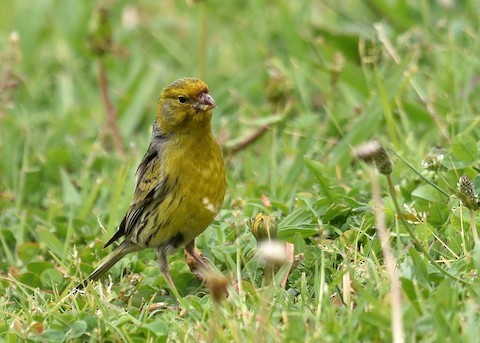
Atlantic Canary, male. (Ribeira de Machico, Madeira, Portugal; April 21, 2018.) © Mallika Rajasekaran
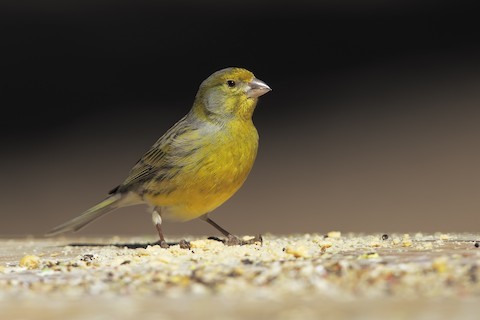
Atlantic Canary, male. (Las Lajas, Tenerife, Spain; February 16, 2017.) © Marco Valentini

Atlantic Canary, male showing dark cheek and yellow brow similar to those of a male European Serin. (Tenerife, Spain; March 5, 2016.) © Paul Cools
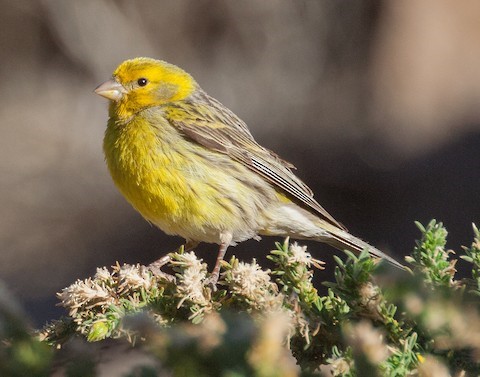
Atlantic Canary, male. (El Portillo, Teide National Park, Tenerife, Spain; May 5, 2008.) © Jose Martin

Atlantic Canary, male. (Maspalomas Botanical Park, Gran Canaria, Spain; January 24, 2020.) © Bruce Kerr
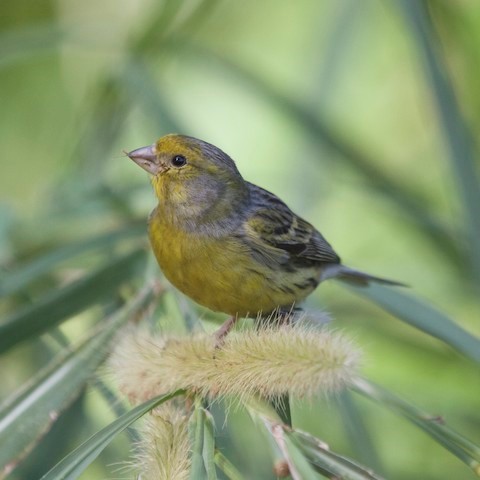
Atlantic Canary, male. (Funchal, Madeira, Portugal; February 26, 2018.) © Bengt Ahgren
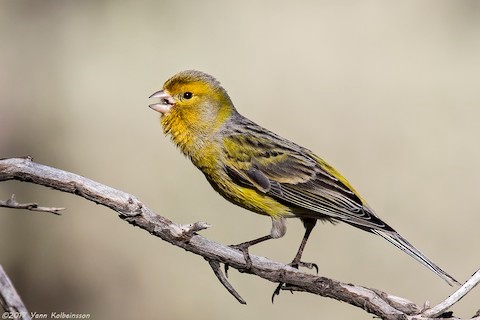
Atlantic Canary, male singing. (Las Cañadas del Teide, Tenerife, Spain; March 29, 2017.) © Yann Kolbeinsson
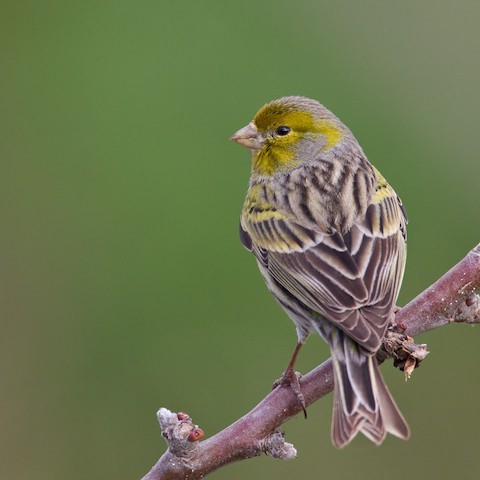
Atlantic Canary, male, showing heavily streaked upperparts. (Tenerife, Spain; March 3, 2014.) © Lars Petersson
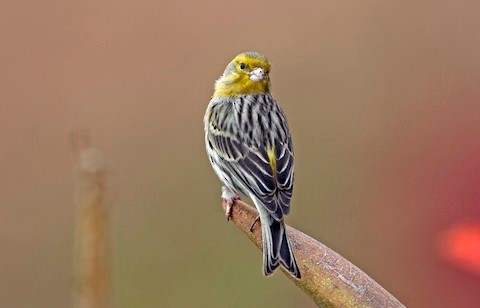
Atlantic Canary, male. (Funchal, Madeira, Portugal; February 26, 2014.) © Hans Petter Kristoffersen
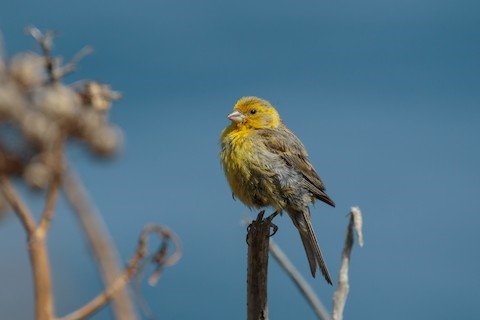
Atlantic Canary, male showing long, thin, deeply forked tail. (Ponta da Oliveira, Santa Cruz, Madeira, Portugal; July 25, 2016.) © Martin Flack
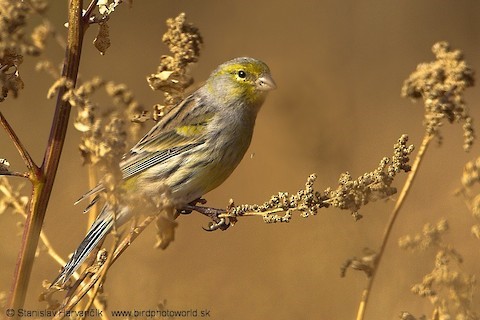
Atlantic Canary, male. (Corvo, Azores, Portugal; October 29, 2018.) © Stanislav Harvančík
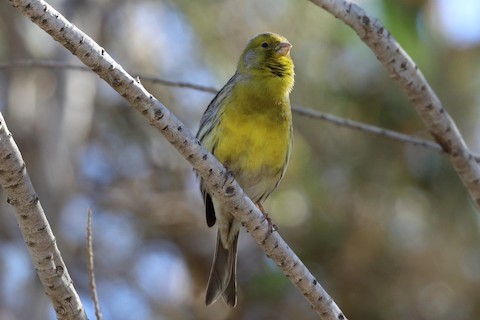
Atlantic Canary, male singing. (Meloneras, Gran Canaria, Spain; January 28, 2020.) © Bruce Kerr
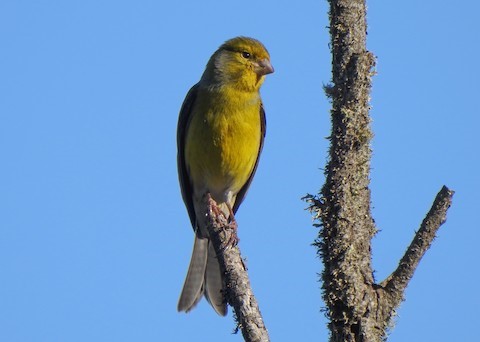
Atlantic Canary, male. (Camino del Guanche, Los Silos, Tenerife, Spain; February 8, 2019.) © Pam Rasmussen

Atlantic Canary, male with pale olive-yellow coloration. (Las Lajas, Tenerife, Spain; October 20, 2019.) © José Velasco
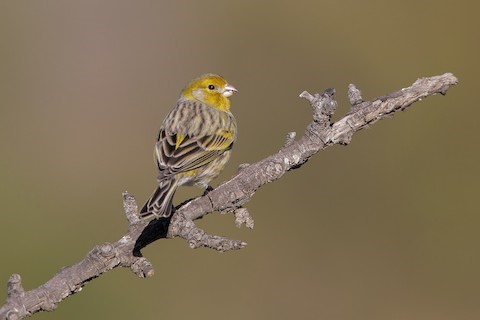
Atlantic Canary, male with localized orange highlights. (Las Lajas, Tenerife, Spain; February 16, 2017.) © Marco Valentini
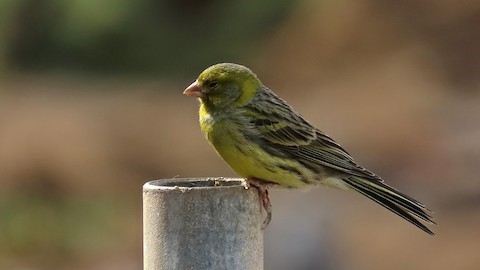
Atlantic Canary, male with somewhat atypically dark streaking. (Maspalomas, Gran Canaria, Spain; December 25, 2019.) © Erkki Lehtovirta
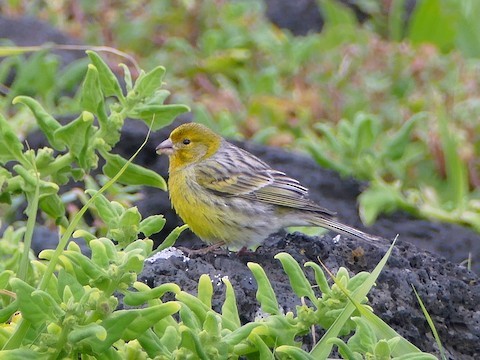
Atlantic Canary, male. (Madalena, Ilha do Pico, Azores, Portugal; April 29, 2017.) © Peter Oberč
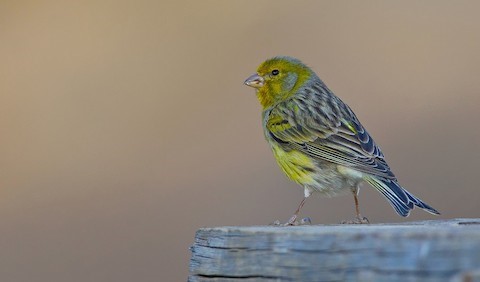
Atlantic Canary, male. (Tenerife, Spain; March 5, 2016.) © Paul Cools

Atlantic Canary, female or young male. (Las Lajas, Tenerife, Spain; January 16, 2020.) © Miguel Rouco

Atlantic Canary, female or immature male. (Maspalomas, Tenerife, Spain; December 25, 2019.) © Erkki Lehtovirta
Females are mostly plain-gray with blackish streaks and usually small yellow or yellowish patches on the face, rump, and sometimes duller patches on the breast, wings, and back.
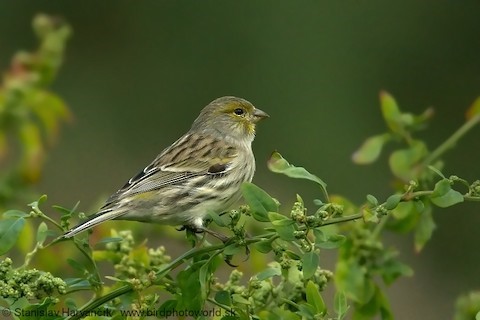
Atlantic Canary, female. (Corvo, Azores, Portugal; October 14, 2017.) © Stanislav Harvančík
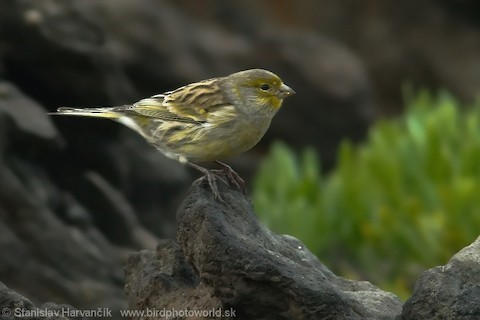
Atlantic Canary, female. (Corvo, Azores, Portugal; October 14, 2017.) © Stanislav Harvančík
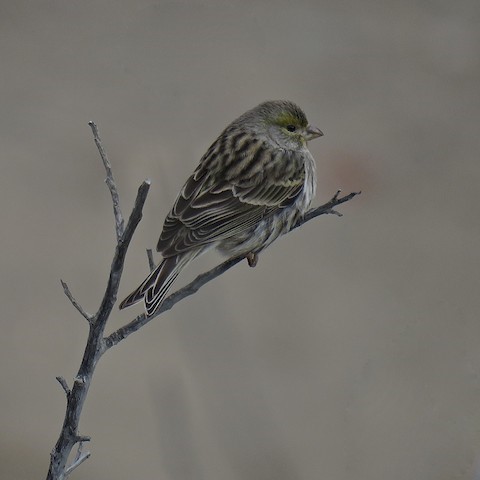
Atlantic Canary, female with only slight yellowish tones around the face. (Maspalomas, Tenerife, Spain; December 16, 2017.) © Erkki Lehtovirta
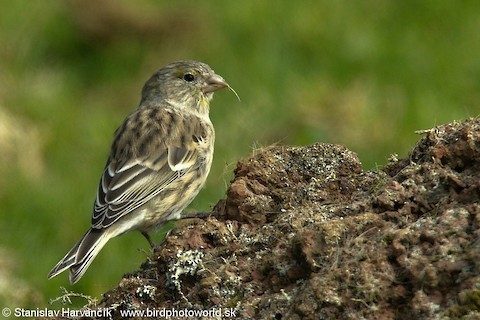
Atlantic Canary, female. (Corvo, Azores, Portugal; October 10, 2017.) © Stanislav Harvančík
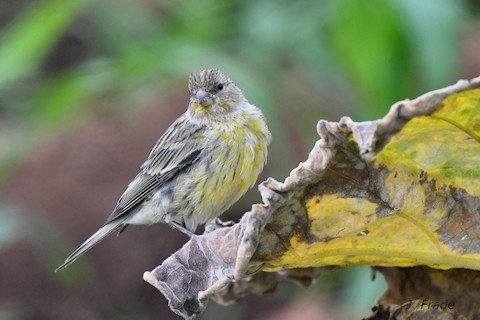
Atlantic Canary, female or immature male. (Porto Moniz, Madeira, Portugal; September 5, 2019.) © José Frade
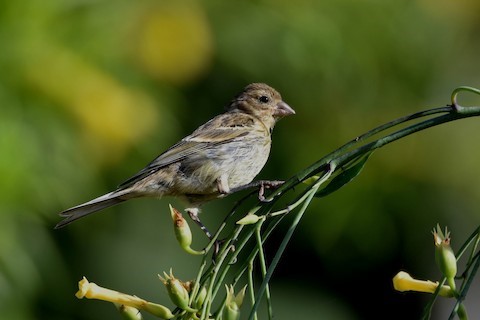
Atlantic Canary, female or immature, showing no yellow and minimal streaking. (Puerto de la Cruz, Tenerife, Spain; July 12, 2015.) © Santiago Caballero Carrera

Atlantic Canary, female or immature male with orange face. (Ponta da Oliveira, Santa Cruz, Madeira, Portugal; July 25, 2016.) © Martin Flack
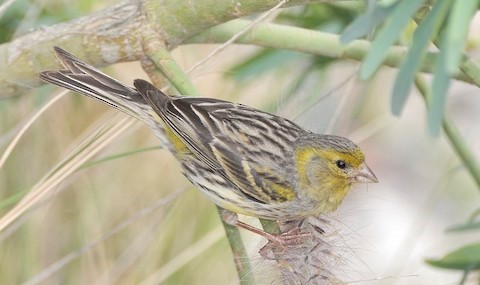
Atlantic Canary, either a colorful female or a plain male. (Tenerife, Spain; April 2, 2009.) © Georges Olioso
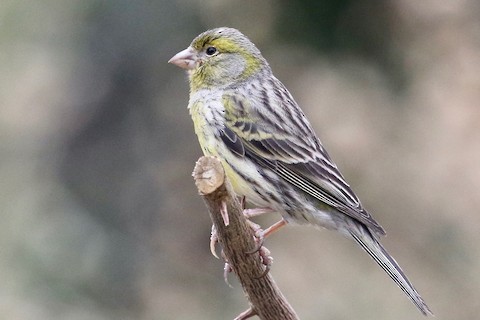
Atlantic Canary, female. (Puerto de la Cruz, Tenerife, Spain; May 19, 2018.) © Gil Ewing

Atlantic Canary, female with slight olive-gray tones in upperparts, but no yellow. (Corvo, Azores, Portugal; October 10, 2017.) © Stanislav Harvančík
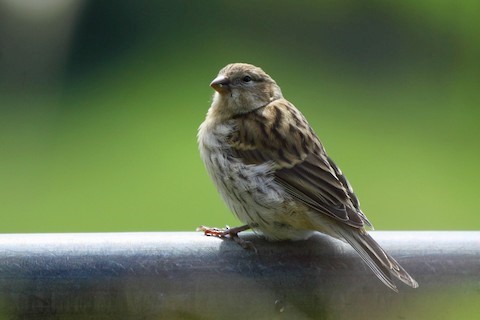
Atlantic Canary, female, showing no yellow. (Fajãzinha, Ilha das Flores, Azores, Portugal; September 25, 2012.) © Antonio Gonçalves

Atlantic Canary, female. (Funchal, Madeira, Portugal; December 16, 2018.) © Lukasz Pulawski
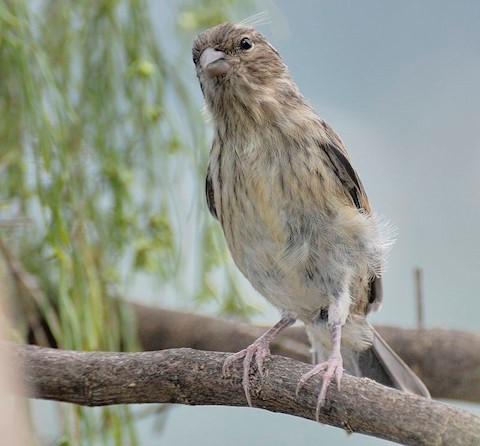
Atlantic Canary, female, showing indistinctly streaked breast. (Tenerife, Spain; March 2, 2009.) © Georges Olioso
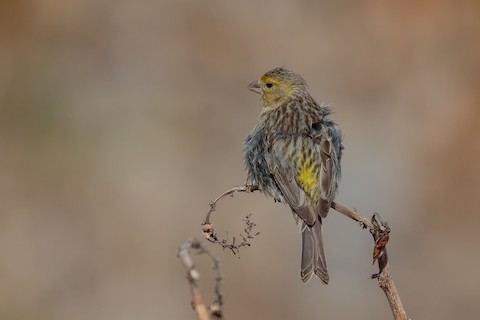
Atlantic Canary, female showing yellow rump similar to that of female European Serin. (Ponta da Oliveira, Santa Cruz, Madeira, Portugal; July 25, 2016.) © Martin Flack

Atlantic Canary, female or immature male. (El Portillo, Teide National Park, Tenerife, Spain; May 5, 2008.) © Jose Martin
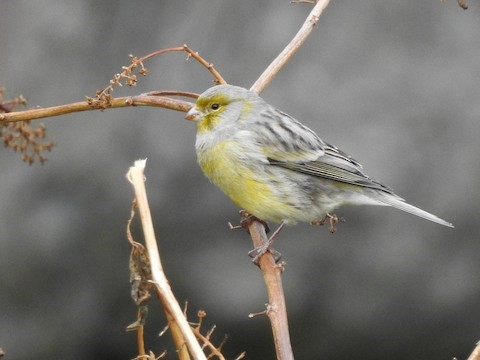
Atlantic Canary, apparently a young male with yellow not yet fully emerged. (Poço da Ribeira do Ferreiro, Ilha das Flores, Azores, Portugal; November 19, 2018.) © M. Sá & J. Teixeira
Domestic canaries have been selectively bred to be pale yellow, and through inbreeding and mutation sometimes express other atypical pigmentation.
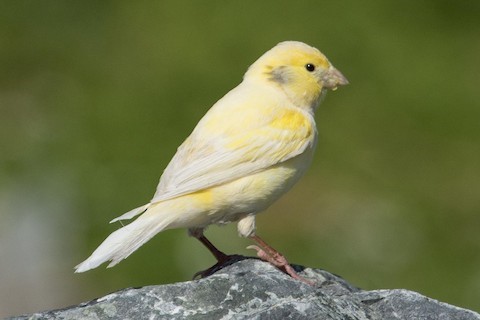
Atlantic Canary, unstreaked, pale-yellow domestic morph, predominant in this introduced population. (Sand Island, Midway Atoll National Wildlife Refuge, Hawaii; Febraury 15, 2017.) © Eric VanderWerf
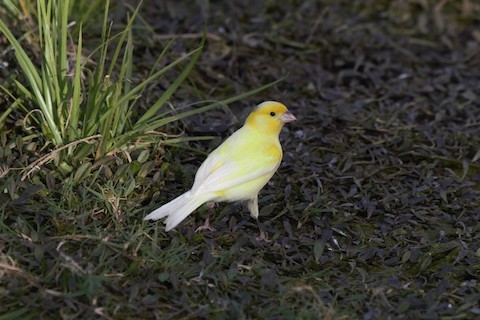
Atlantic Canary, unstreaked, pale-yellow domestic morph, predominant in this introduced population. (Sand Island, Midway Atoll National Wildlife Refuge, Hawaii; March 17, 2019.) © Jonathan Plissner
These phenotypes rarely occur in the wild, but are predominant in the introduced population on Midway Atoll in the Pacific Ocean.

Atlantic Canary, unstreaked, pale-yellow domestic morph, predominant in this introduced population. (Sand Island, Midway Atoll National Wildlife Refuge, Hawaii; Febraury 15, 2017.) © Eric VanderWerf
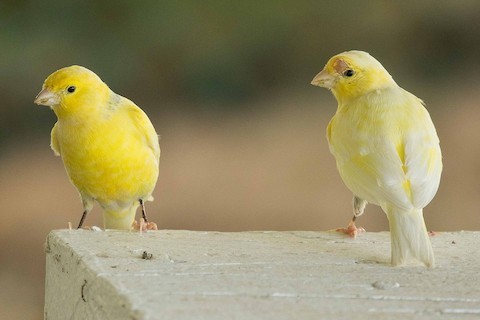
Atlantic Canary, unstreaked, pale-yellow domestic morph, predominant in this introduced population. (Sand Island, Midway Atoll National Wildlife Refuge, Hawaii; August 22, 2017.) © Eric VanderWerf
Cf. European Serin. European Serin overlaps with Atlantic Canary in the Canary Islands and has been recorded as a vagrant on the Azores and Madeira. The two species differ vocally but are very similar-looking. Some individuals may not be identifiable by visible features alone, but their typical plumages are distinguishable:
Voice: European Serin’s song is described as wheezy and unmusical, and its call is a buzzy trill. Atlantic Canary is renowned for the sweetness of its singing. Its call may be buzzy at times, but not usually.
Overall Shape: Atlantic Canary has a longer tail and proportionately smaller-looking head than European Serin. Conversely, the serin appears large-headed and short-tailed.
Male Head Pattern: Male European Serin typically has a large dark cheek patch bordered by a bright yellow brow-stripe. Male Atlantic Canary varies widely, with some individuals being extensively saturated with yellow and others being grayer, and most have some gray on the cheek and some yellow on the brow. This distinction is mostly reliable for identifying male canaries that do not have the serin’s pattern. Individuals that have the serin’s pattern could be either species
Female Breast Pattern: Female European Serin has a boldly streaked breast, whereas female Atlantic Canary’s breast is either indistinctly streaked or unstreaked.
Female Rump: Female European Serin has an unstreaked pale-yellow rump patch. The typical female Atlantic Canary has a vaguely streaked and largely yellow rump. This distinction is rarely useful in the field, as both have yellow rumps and the difference is one of degree that is difficult to evaluate.
Bill Color and Shape: Some identification references contrast the bills of European Serin and Atlantic Canary, characterizing the serin’s bill as blunt and gray and the canary’s as longer and pinker. These contrasts may be accurate in many cases, but not always—the canary’s bill can also appear blunt and gray.
Notes
Monotypic species. Also known as the Island Canary or simply the Canary.
References
BirdLife International. 2018. Serinus canaria. The IUCN Red List of Threatened Species 2018: e.T22720056A132137153. https://dx.doi.org/10.2305/IUCN.UK.2018-2.RLTS.T22720056A132137153.en. (Accessed May 5, 2020.)
Clement, P. 2020. Island Canary (Serinus canaria). In Handbook of the Birds of the World Alive (J. del Hoyo, A. Elliott, J. Sargatal, D.A. Christie, and E. de Juana, eds.). Lynx Edicions, Barcelona. https://www.hbw.com/node/61292. (Accessed May 5, 2020.)
Clement, P., A. Harris, and J. Davis. 1993. Finches and Sparrows: An Identification Guide. Princeton University Press, Princeton, N.J.
eBird. 2020. eBird: An online database of bird distribution and abundance. Cornell Lab of Ornithology, Ithaca, N.Y. http://www.ebird.org. (Accessed May 5, 2020.)
Garcia-del-Rey, E. 2011. Field Guide to the Birds of Macaronesia: Azores, Madeira, Canary Islands, Cape Verde. Lynx Editions, Barcelona.
Garcia-del-Rey, E. 2018. Birds of the Canary Islands. Christopher Helm, London.
Mullarney, K., L. Svensson, D. Zetterström, and P.J. Grant. 1999. Birds of Europe. Princeton University Press, Princeton, N.J.
Pyle, R.L., and P. Pyle. 2017. The Birds of the Hawaiian Islands: Occurrence, History, Distribution, and Status. Version 2 (January 1, 2017). http://hbs.bishopmuseum.org/birds/rlp-monograph/. B.P. Bishop Museum, Honolulu, Hawaii.
Xeno-Canto. 2020. Atlantic Canary – Serinus canaria. https://www.xeno-canto.org/species/Serinus-canaria. (Accessed May 5, 2020.)
